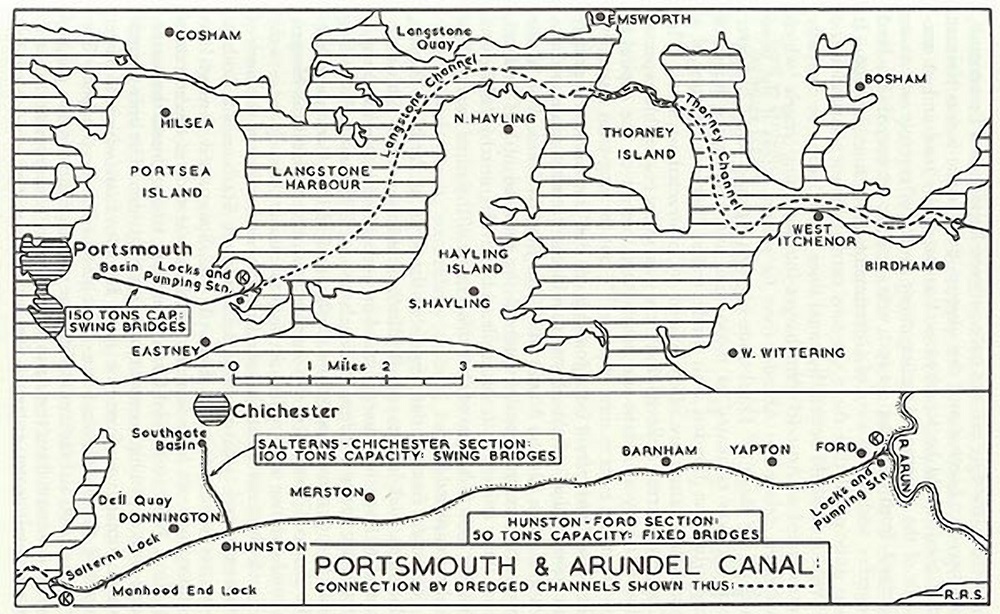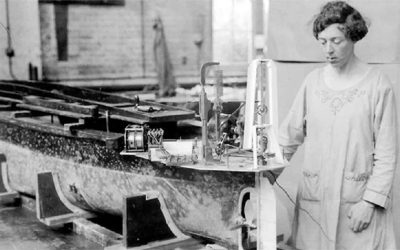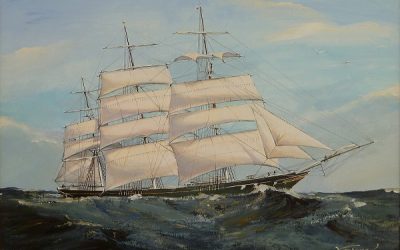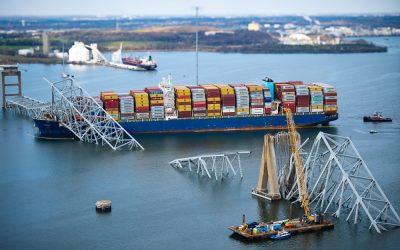By Mark Barton, RINA historian
In the maritime industry, we’re used to large elements of infrastructure being constructed to support dockyards, and regular disruptions to the global supply chain regularly highlight the importance of assuring that infrastructure remains resilient.
2023 marked the bicentenary of a project that was designed to do both of those but turned out to be a white elephant: a 20 mile canal specifically constructed so the French could not interrupt seaborne supplies reaching Portsmouth Dockyard. The supply route was also significant as being one of the earliest uses of a steam tug in Britain.
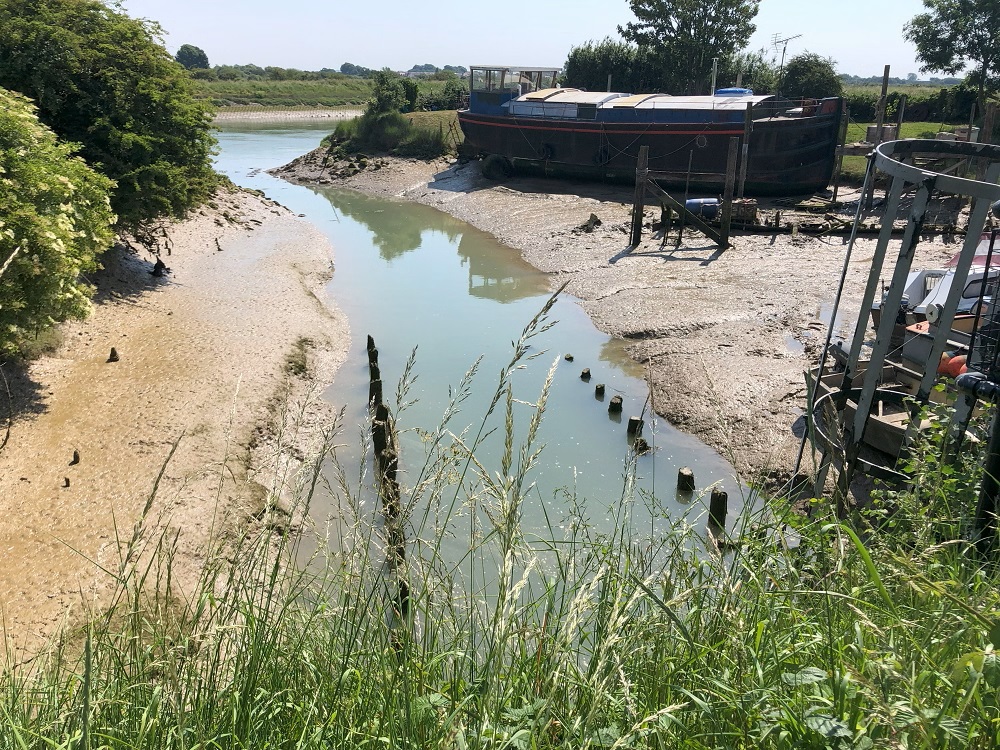
Lock entering the Canal at the River Arun. Source: Mark Barton
During the Napoleonic era it was feared that the ships supplying Portsmouth could be disrupted by the French. This was particularly applicable to guns and gunpowder, which came from London and needed to be transported in large, heavy quantities; something achieved far more expediently by water. To avoid sailing out of London and all the way round the coast the use of rivers and canals offered a logical solution.
A considerable part of the route was already in place. The River Thames has as one of its tributaries the River Wey and this is navigable for the first part. The River Arun, which enters the sea at Littlehampton, is also navigable for the first part and had been extended by a canal in 1787. Therefore, what was in effect an extension of that canal – turning it into the Wey and Arun Canal – linked London to the south coast by water and provided the means of moving cargo from London to the wharves at Littlehampton. This was formally approved by an Act of Parliament in 1813.
However, the cargo’s journey along the south coast still represented a vulnerability where it could potentially be interrupted by an enemy and prevented from reaching Portsmouth Dockyard. To solve this problem, and protect national interests, a 20-mile inland water route was planned and constructed to link Portsmouth with the Arun. The challenge of getting financial approval for big projects is nothing new and it wasn’t until 1817, just after the war finished, that assent was given, with work commencing the following year. So much of the last 800 years at this point had been spent fighting the French, no one doubted there would soon be another such war. The canal was completed relatively quickly and opened in May 1823.
The route used a canal constructed from the Arun to Chichester harbour, entering just upstream of Bosham. A side leg was built to go from the canal into Chichester. The route then made use of the islands and went through a dredged channel off the southern coast of Thorney Island, where it passed north of Hayling Island into Langstone Harbour and entered the second stretch of canal, the Portsea Canal, at its entrance at Milton. It was towing these barges, across Chichester and Langstone Harbours, that used a steam tug named Egremont after the Earl of Egremont, who was a major shareholder in the project.
But there were two major problems: first Britain did not return to war with the France, meaning there were no threats to this part of the supply route and revenue was not what was expected; secondly it contaminated local water supplies on Portsea Island, where Portsmouth is. Consequently the Portsea section was abandoned by 1830. The same did not apply to the Arun and Wey Canal which lasted as a working route until 1871, by which time it was losing out to a quicker railway completed in 1865 and operating on a similar route.
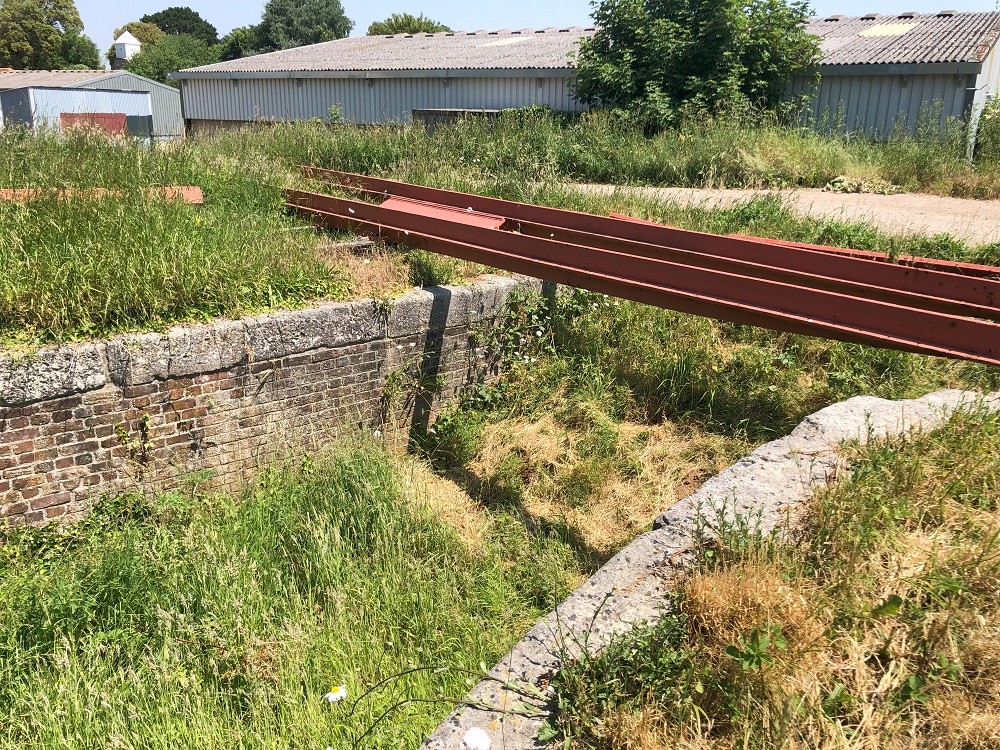
The remains of the Stewart Swing Bridge near Bognor Regis. Source: Mark Barton
The Arun and Wey Canal still remains a waterway, albeit no longer fully navigable, but with ongoing efforts to fully restore it. This has been making steady progress; the Chichester leg, where it came down to meet the canal, is now fully open, while the leg to Chichester Harbour section remains a waterway with the first part from Chichester still used for boat trips in canal boats.
The section from the Arun to Chichester and the element across Portsea has now largely been obscured by other developments, among them fruit farms and housing estates. But, there are footpaths along the whole route, while the two locks where the route started at the River Arun and Langstone Harbour entrances are both extant, albeit they might easily be mistaken for old docks if their history were not known.
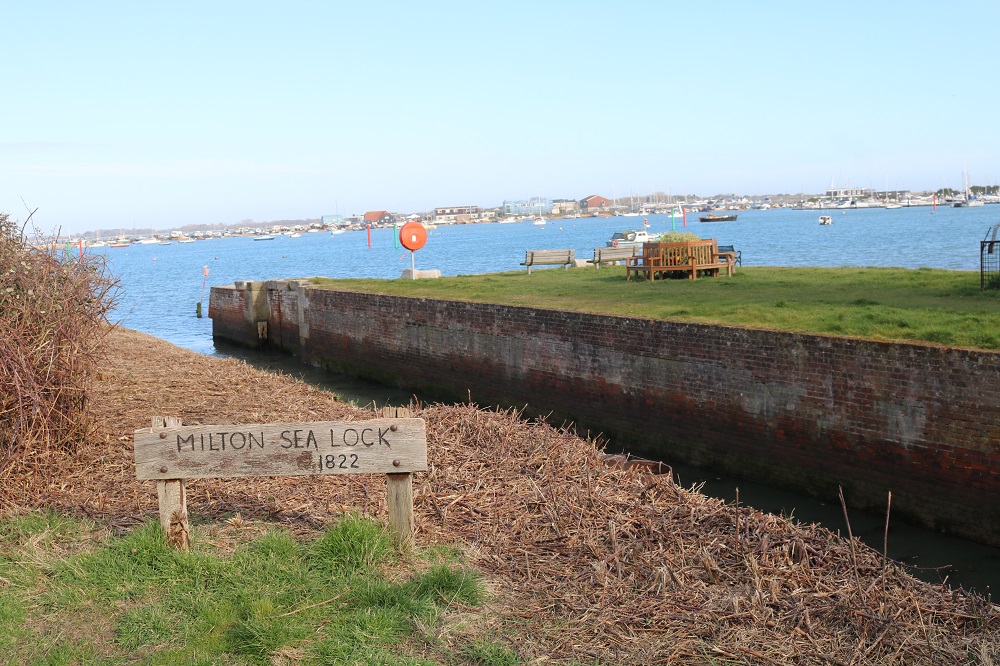
Lock entering the Canal at Portsea Island. Source: Mark Barton
While so much of this major feat of engineering has now disappeared, the clues are there to be able to trace the route. There are many odd features that are explained by it from a towpath bridge in the middle of a housing estate; the strip of modern houses on raised ground along part of the Portsea leg; canal bridges in the middle of fields and buildings that do not fit the style of those around them (such as the old Lock Houses).
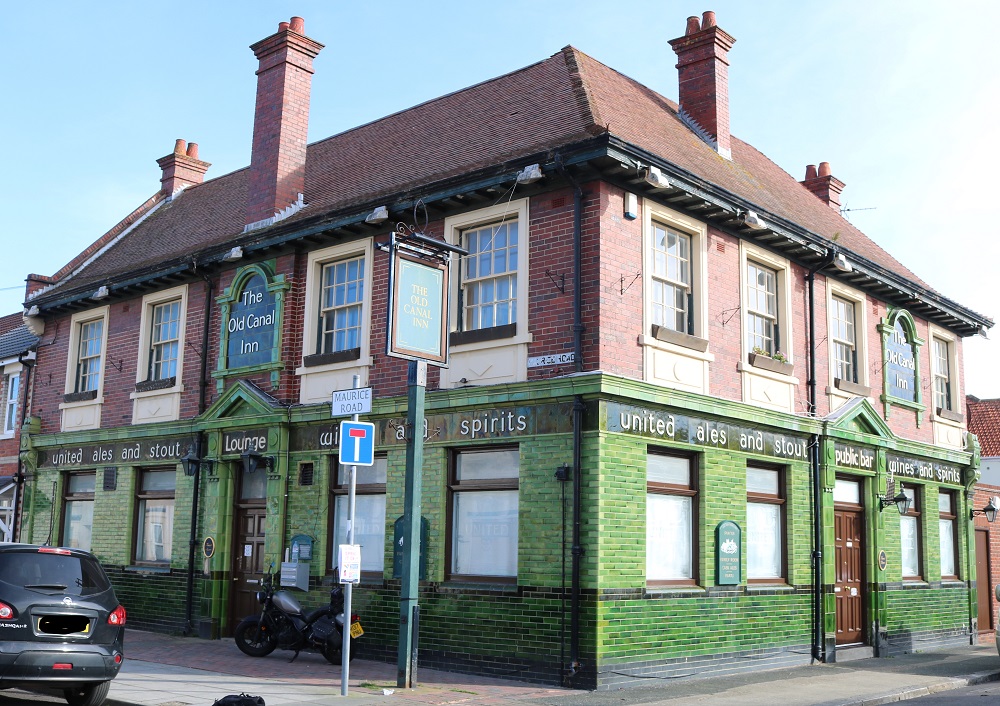
Portsmouth’s Old Canal Inn. Source: Mark Barton
It is also features in both the names of roads, such as Locksway Road, Waterlock Gardens and Towpath Mead and the names of public houses such as the Old Canal Inn; all of which can be found in the Portsmouth section. At the Portsmouth end the basin built to allow the loading and unloading led to the name Arundel Street (as it was linked to the River Arun). The canal bed between Fratton Bridge and Portsmouth and Southsea station was later used for the railway hence the street alongside is Canal Walk.
This article originally appeared in the November/December 2023 edition of The Naval Architect.
